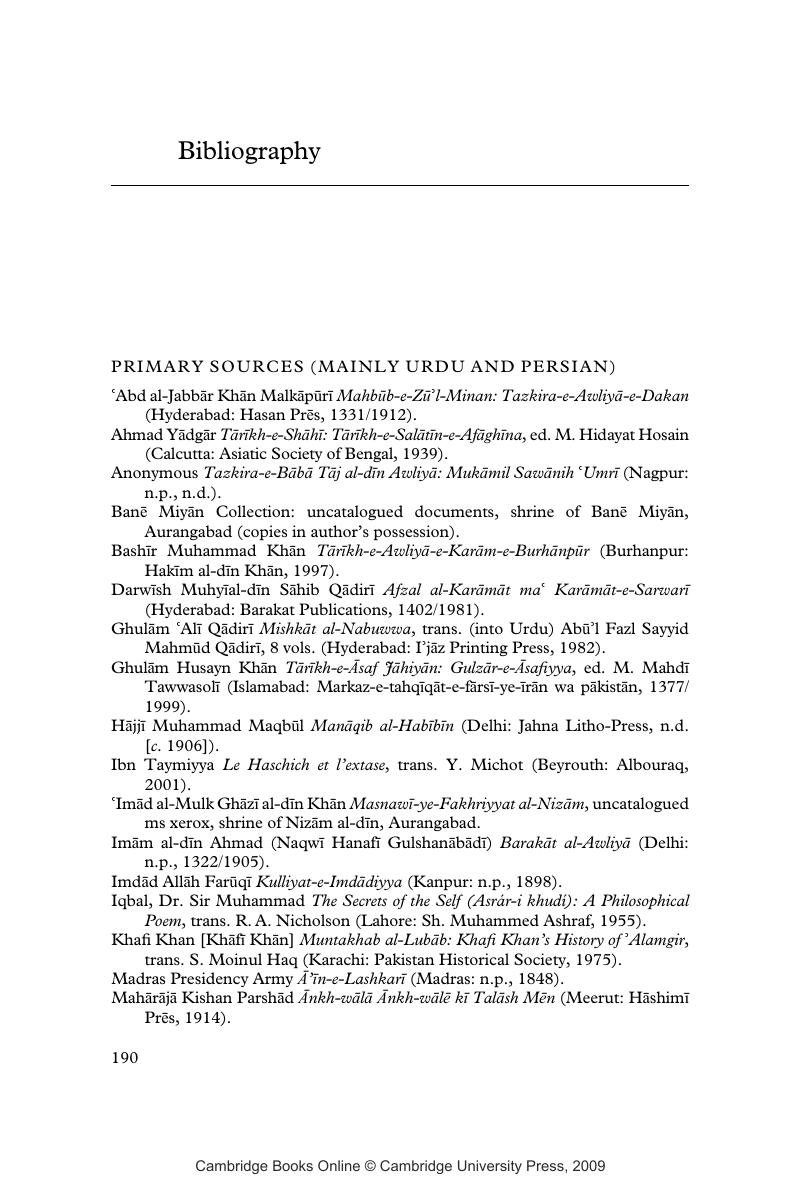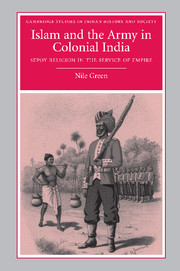Book contents
- Frontmatter
- Contents
- List of illustrations
- Preface and acknowledgements
- A note on terminology
- Glossary of Urdu and Anglo-Indian terms
- Map Nizam's State and its cantonment towns
- Cambridge Studies in Indian History and Society
- Introduction
- 1 Traditions of supernatural warfare
- 2 The padre and his miraculous services
- 3 Allah's naked rebels
- Conclusions
- Notes
- Bibliography
- Index
- References
Bibliography
Published online by Cambridge University Press: 29 July 2009
- Frontmatter
- Contents
- List of illustrations
- Preface and acknowledgements
- A note on terminology
- Glossary of Urdu and Anglo-Indian terms
- Map Nizam's State and its cantonment towns
- Cambridge Studies in Indian History and Society
- Introduction
- 1 Traditions of supernatural warfare
- 2 The padre and his miraculous services
- 3 Allah's naked rebels
- Conclusions
- Notes
- Bibliography
- Index
- References
Summary

- Type
- Chapter
- Information
- Islam and the Army in Colonial IndiaSepoy Religion in the Service of Empire, pp. 190 - 210Publisher: Cambridge University PressPrint publication year: 2009



